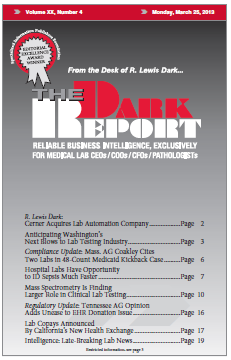CEO SUMMARY: California will operate one of the nation’s largest health insurance benefit exchanges, as defined by the Affordable Care Act. Officials recently unveiled details about the exchange, to be called Covered California. Based on bronze, silver, gold, or platinum plan coverage, beneficiaries will be required to pay a copay of between $6 and $45 …
Lab Copays Announced by California Exchange Read More »
To access this post, you must purchase The Dark Report.


